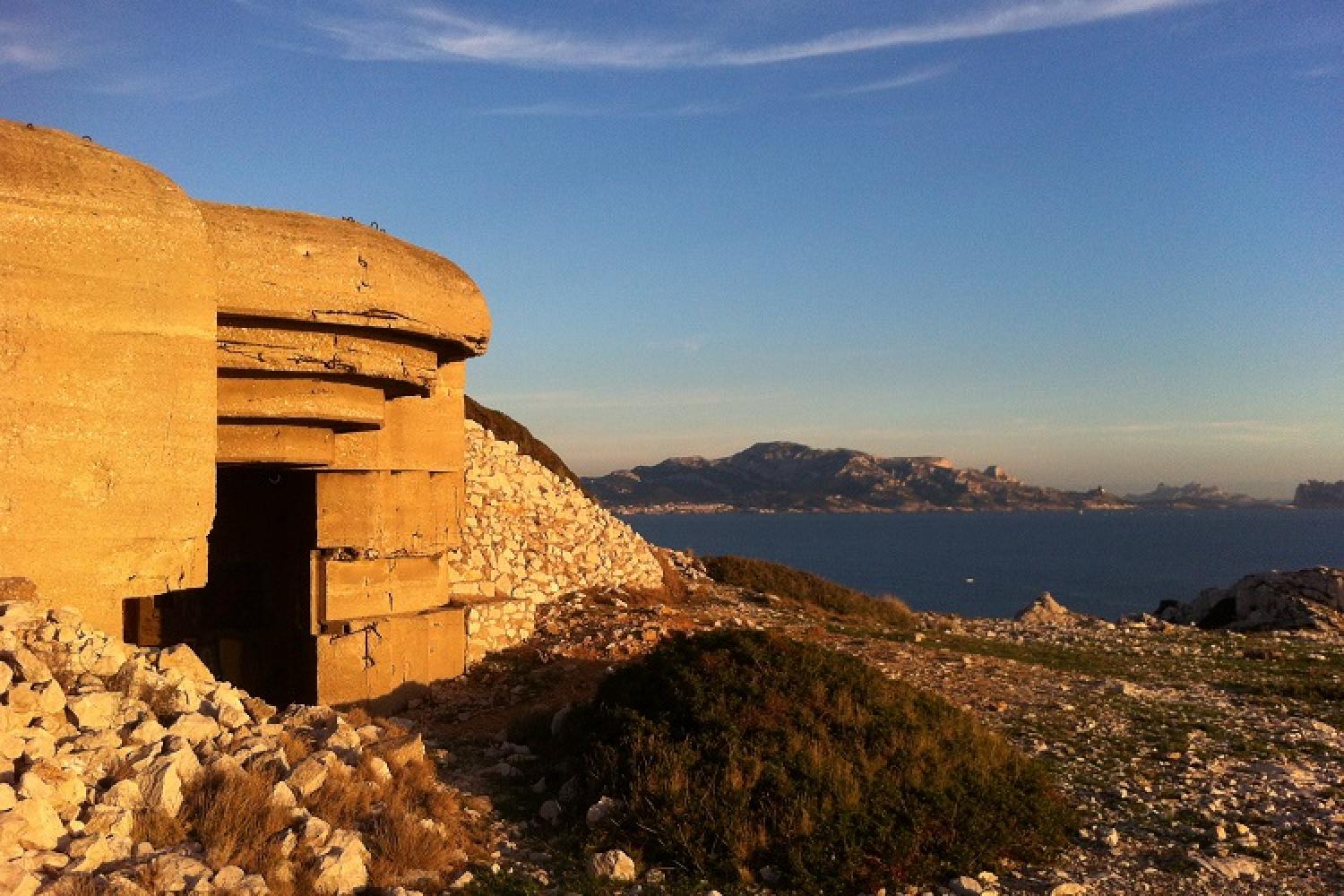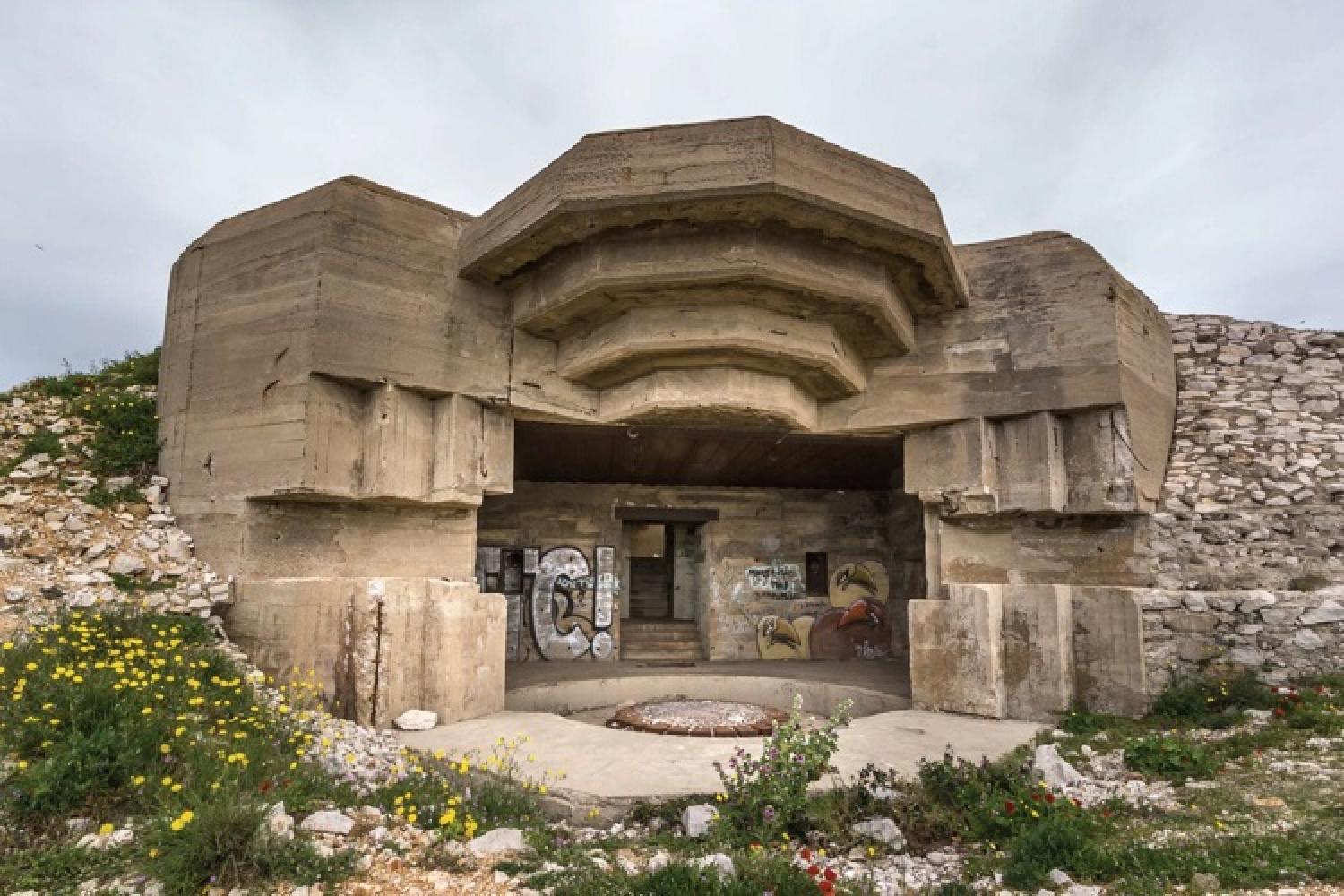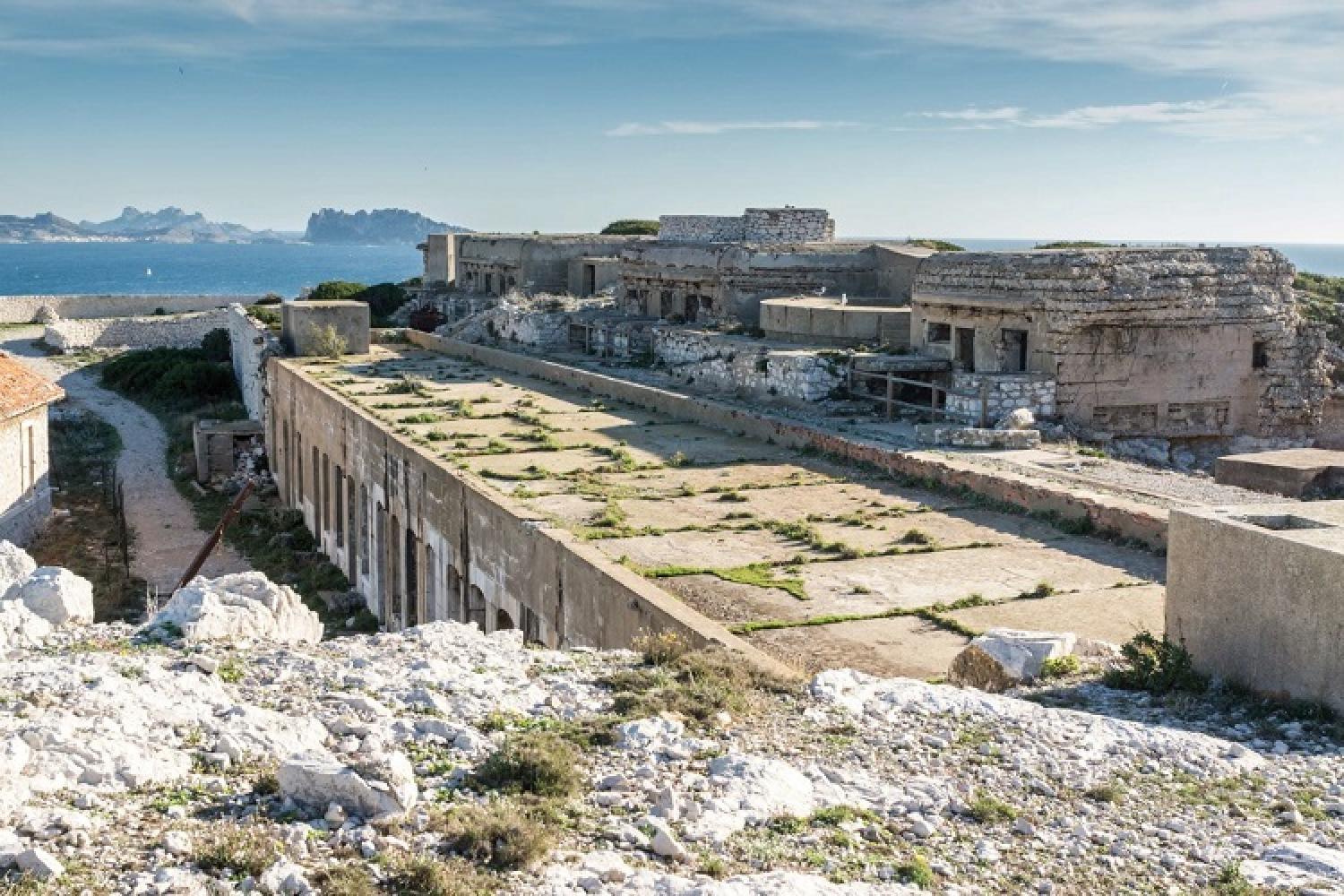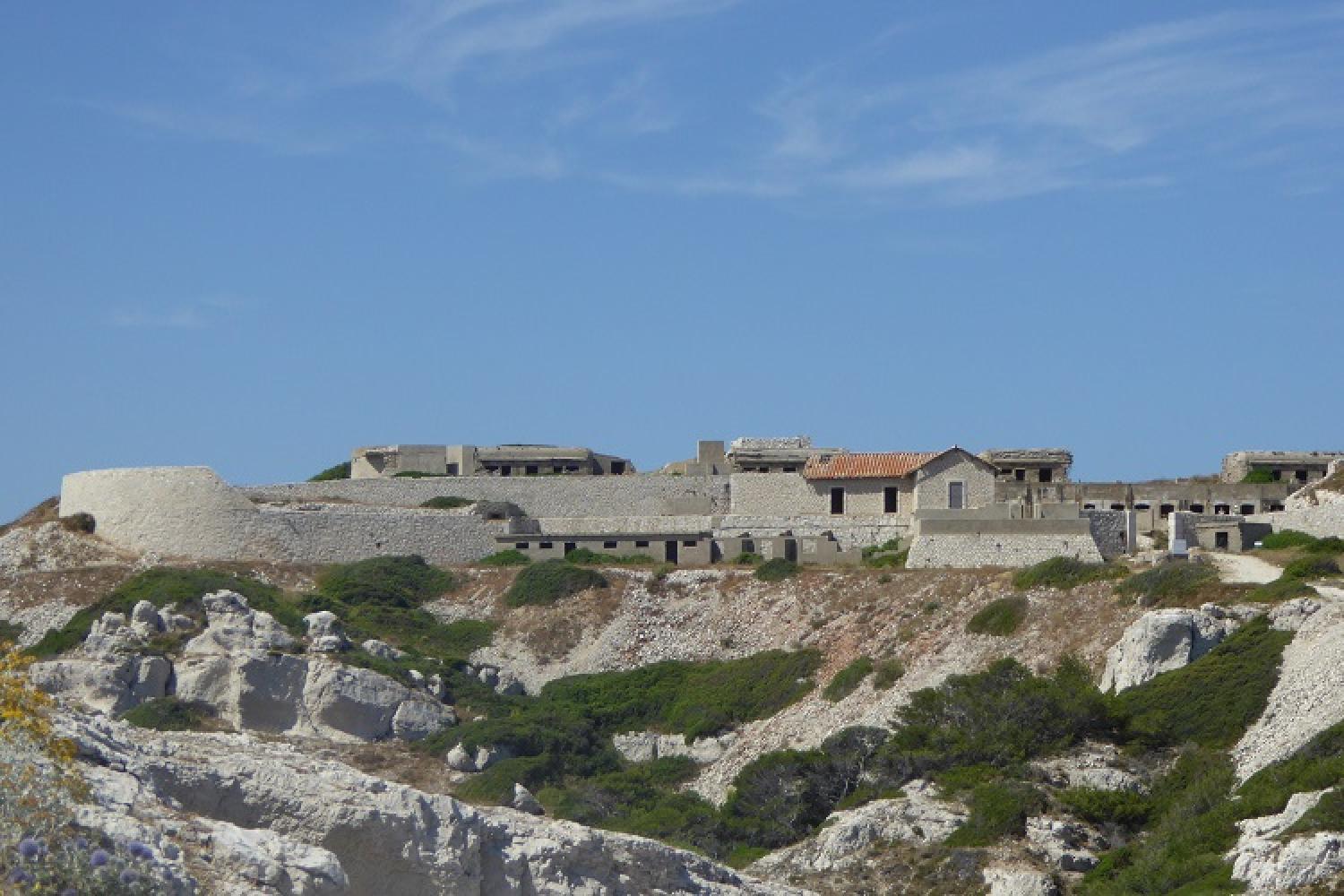A military settlement at Le Frioul
From head to foot
The name "Cap Cavau" is known to date at least from 1695. Cavau is a contraction of "Cap Vau". Although vau can mean vale or valley in the Provençal language, as in En-Vau, here it is more likely that the word vau or avau refers to a place situated "down below". This location would refer to its situation at the southern end of Frioul, as it would be designated on a nautical chart.
"Cap Cavau" would therefore be a tautology, i.e. a repetition, here of the word "cap" (headland). The spelling "Caveaux", which was incorrect, was generalised by the military to name the batteries they set up on the plateau at the end of the 19th century.
A stronghold
The Frioul islands have always represented a strong military challenge for the defence or capture of the bay of Marseille. With the significant increase in the possible range of fire in the mid-19th century, the Cavau plateau, which commands the entire bay of Marseille, became a strategic priority.
The Cavau battery was built between 1883 and 1886. It was equipped with two cannons, shelters (notably for gunpowder) and a barracks. Between 1906 and 1908, this architectural ensemble was replaced by four cannons and reinforced concrete shelters to better resist shells. Several technical improvements were then made, a dwelling was built at the entrance and a rainwater-fed cistern was added.
From 1943 onwards, additional guns and ammunition bunkers were added by the Germans. Three artillery pieces were placed under concrete casemates. A fourth gun was under construction at the time of the Liberation and remained unfinished. Firing was adjusted by means of a firing post assisted by powerful searchlights and a rangefinder, a device used to measure distances.
From Germans to seagulls
Today, the ruined site is strangely in keeping with the wildness of its natural surroundings. A wind-beaten cliff at the end of the world, dominating the open sea and staring out from its empty bunkers, it is now as deserted as it was busy during the war.
It is now used only by the gulls who have made it their home, particularly in the spring, during breeding season. At this time of year, it is advisable to stay away from the site, as this bird knows how to defend its eggs and young with vigour!
"That sort of stupor and delicious overwhelm that comes from contemplating the sea. You know, don't you, that lovely intoxication of the soul? You don't think, you don't dream either. Your whole being escapes you, flies away, scatters. You are the seagull that dives, the dust of foam that floats in the sun between two waves..."
Alphonse Daudet
 Further reading
Further reading
Défense côtière de Marseille. Historique de la batterie Caveaux sur l’île de Pomègues, Alain CHAZETTE
Îles du Frioul - L'histoire, by François-Noël Richard, éditions Les Alpes de lumière
Visiting and rules
Before going to the Calanques National Park, prepare your visit and consult the good practices to adopt and the regulations to be followed.
The Cavau battery cannot be visited, but you can take the beautiful panoramic dead-end path that leads to it, then bypass it on the left towards the tip of the headland.
Access
Bateau Frioul-If from the Vieux-Port, then approximately 40 minutes on foot.
Location
GPS Coordinates: 43.260692, 5.289533








